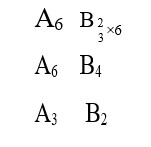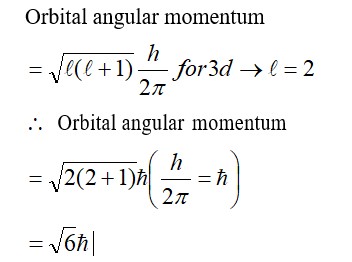19. For the reaction 2 A(g) + B(g) → 2D(g)
ΔU° = – 10.5 kJ and ΔS? = – 44.1 JK–1.
Calculate ΔG? for the reaction, and predict whether the reaction may occur spontaneously.
19. For the reaction 2 A(g) + B(g) → 2D(g)
ΔU° = – 10.5 kJ and ΔS? = – 44.1 JK–1.
Calculate ΔG? for the reaction, and predict whether the reaction may occur spontaneously.
-
1 Answer
-
19. ΔH° = ΔU° + Δng RT
ΔU° = -10.5 kJ, Δng = 2-3 = -1 mol, R = 8.314 x 10-3 kJ mol-1, T = 298 K
ΔH° = (- 10.5 kJ) + [ (- 1 mol) x (8.314 x 10-3 kJ mol-1) x (298 K)]
= -10.5 kJ – 2.478 kJ
= -12.978 kJ
According to Gibbs Helmholtz equation:
ΔG° = ΔH° - TΔS°
= (- 12.978 kJ) – (298 K) x (- 0.0441 kJ K-1)
= -12.978 + 13.142
= 0.164 kJ
Since the value of
...more
Similar Questions for you
Kindly go through the solution
(1) [Ni (NH3)6]+2 → Ni+2 → d8, C. No. = 6,
SP3d2, Para
(2) [Co (H2O)6]+2 → Co+2 → d6, C. No. = 6
d2sp3, Dia
(3) [Ti (H2O)6]+3 → Ti+3 → d1, C. No. = 6
d2SP3, Para
(4) [Co (NH3)6]+3 → Co+3 → d5, C. No. = 6
d2sp3, Para
Taking an Exam? Selecting a College?
Get authentic answers from experts, students and alumni that you won't find anywhere else
Sign Up on ShikshaOn Shiksha, get access to
- 65k Colleges
- 1.2k Exams
- 679k Reviews
- 1800k Answers



